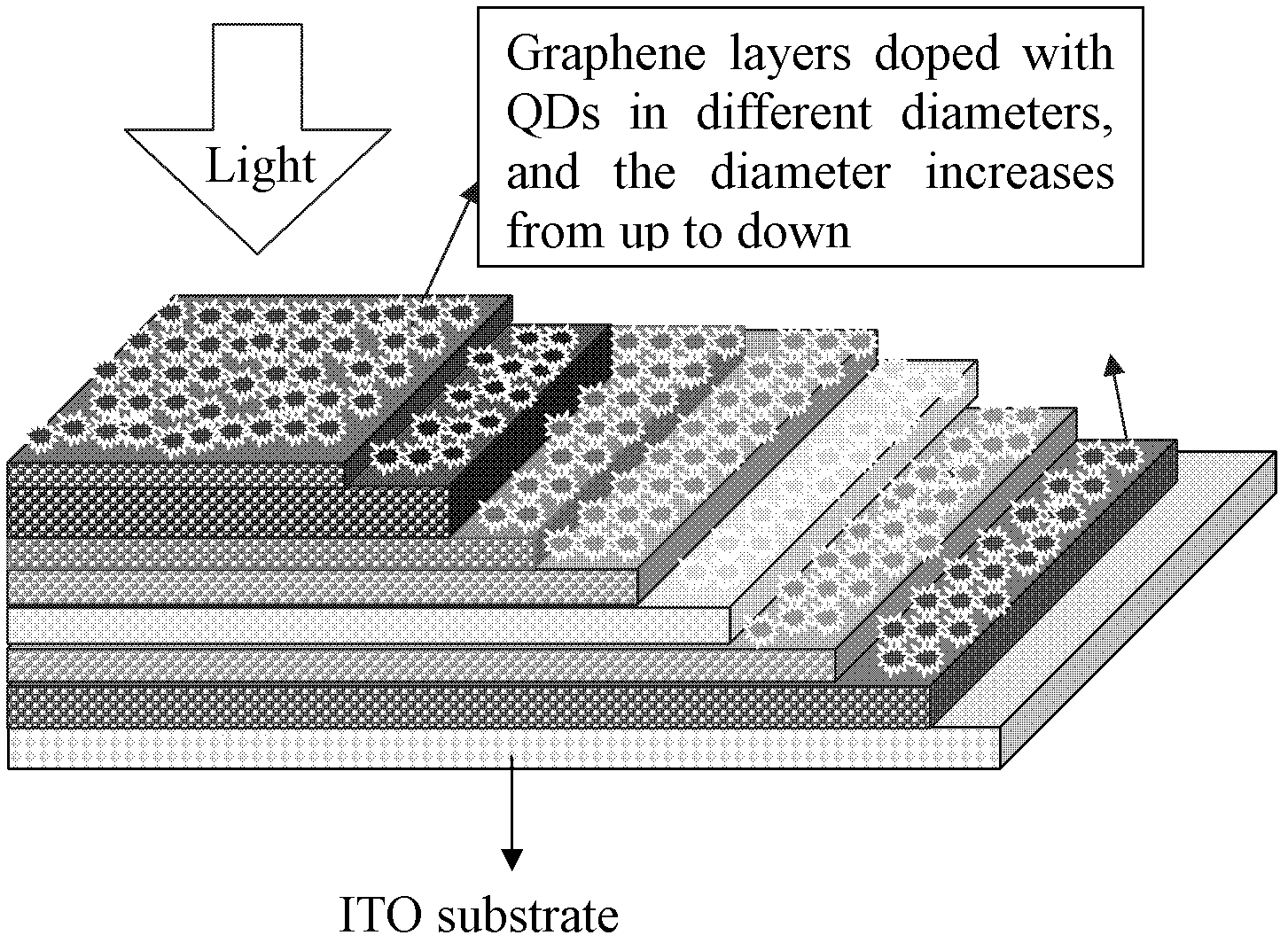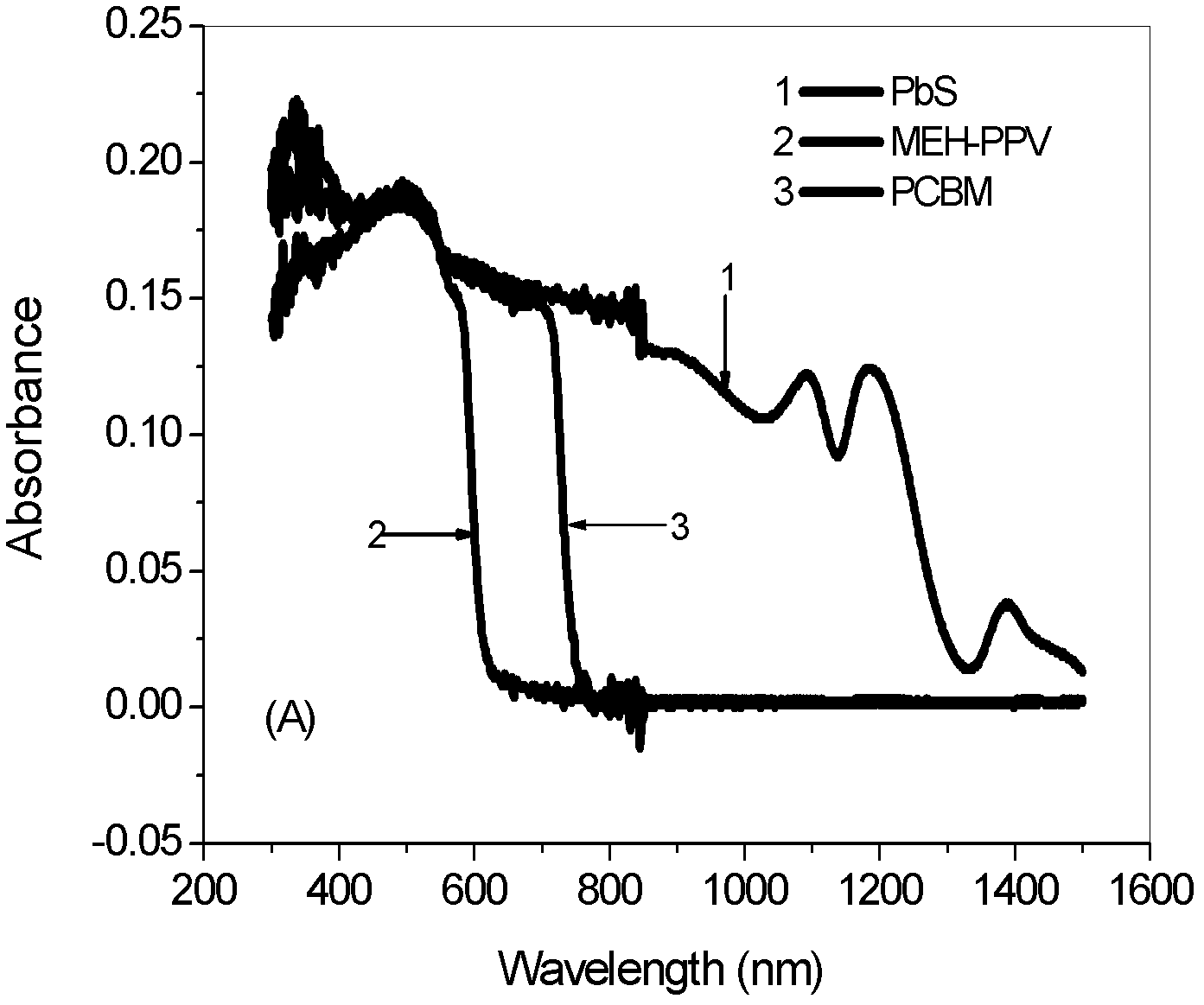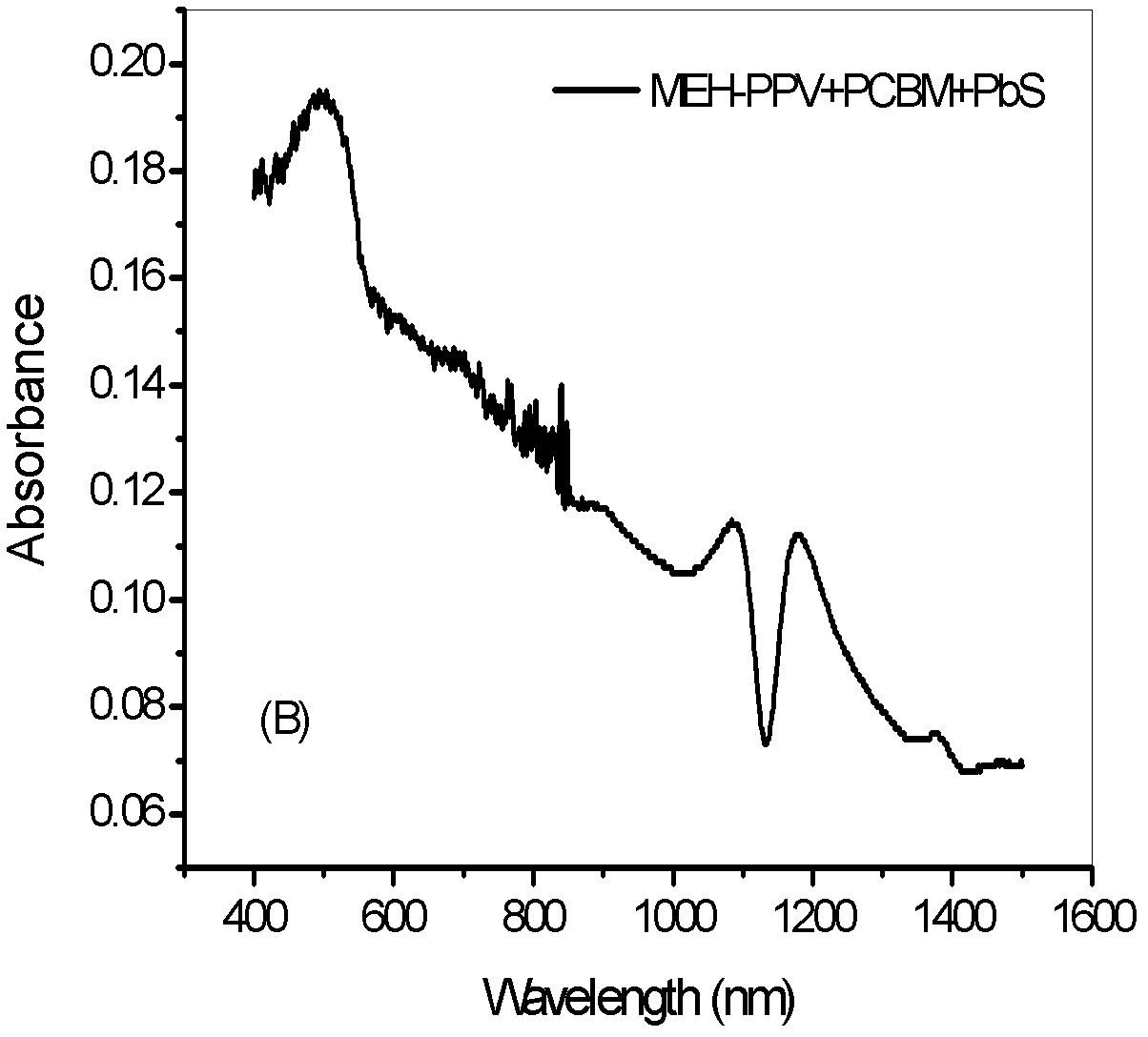A solar cell based on colloidal quantum dots and graphene as a photoanode and its preparation method
A technology of colloidal quantum dots and solar cells, which is applied in photovoltaic power generation, semiconductor/solid-state device manufacturing, circuits, etc., can solve the problems of expensive preparation cost, low energy conversion efficiency of photovoltaic devices, and cannot be greatly improved, and achieves simple preparation, Increase photoelectric conversion efficiency and facilitate effective separation
- Summary
- Abstract
- Description
- Claims
- Application Information
AI Technical Summary
Problems solved by technology
Method used
Image
Examples
Embodiment 1
[0029] A solar cell based on colloidal quantum dots and graphene as a photoanode, including a photoanode based on colloidal quantum dots and graphene, an organic polymer active layer and an electrode;
[0030] The above colloidal quantum dots are narrow bandgap colloidal quantum dots PbS;
[0031] The above-mentioned organic polymer active layer is a mixture of P3HT and PCBM, wherein the mass ratio of P3HT and PCBM is 1:1; P3HT and PCBM have good energy level matching, which is conducive to the collection of charges;
[0032] The above electrode is an aluminum electrode, and aluminum is stable in air; its work function is 4.28eV.
[0033] A method for preparing a solar cell based on colloidal quantum dots and graphene as a photoanode, the specific steps are:
[0034] 1) First, wipe the ITO glass repeatedly with absorbent cotton and detergent, rinse it with deionized water, then use deionized water, acetone and isopropanol to ultrasonically clean it for 15 minutes, and use nit...
Embodiment 2
[0039] A solar cell based on colloidal quantum dots and graphene as a photoanode, including a photoanode based on colloidal quantum dots and graphene, a PEDOT:PSS hole transport layer, an organic polymer active layer, a PCBM electron transport layer and an electrode;
[0040] The above colloidal quantum dots are narrow bandgap colloidal quantum dots PbS;
[0041] The above-mentioned organic polymer active layer is a mixture of P3HT and PCBM, wherein the mass ratio of P3HT and PCBM is 1:1; P3HT and PCBM have good energy level matching, which is conducive to the collection of charges;
[0042] The above electrode is an aluminum electrode; its work function is 4.28 eV.
[0043] A method for preparing a solar cell based on colloidal quantum dots and graphene as a photoanode, the specific steps are:
[0044] 1) First, wipe the ITO glass repeatedly with absorbent cotton and detergent, rinse it with deionized water, then use deionized water, acetone and isopropanol to ultrasonically...
PUM
| Property | Measurement | Unit |
|---|---|---|
| Work function | aaaaa | aaaaa |
| Thickness | aaaaa | aaaaa |
| Resistance | aaaaa | aaaaa |
Abstract
Description
Claims
Application Information
 Login to View More
Login to View More - R&D Engineer
- R&D Manager
- IP Professional
- Industry Leading Data Capabilities
- Powerful AI technology
- Patent DNA Extraction
Browse by: Latest US Patents, China's latest patents, Technical Efficacy Thesaurus, Application Domain, Technology Topic, Popular Technical Reports.
© 2024 PatSnap. All rights reserved.Legal|Privacy policy|Modern Slavery Act Transparency Statement|Sitemap|About US| Contact US: help@patsnap.com










